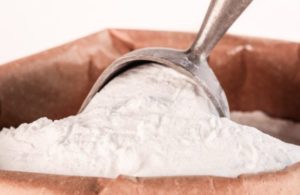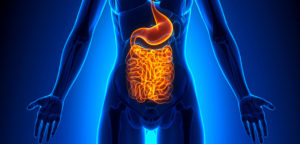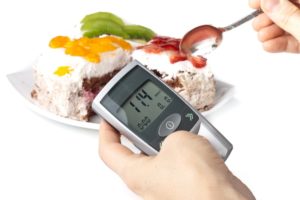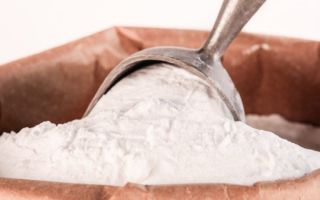Content
The benefits and harms of maltodextrin are still a matter of controversy. The substance is considered a sugar substitute, but is sugar actually inferior to it in its properties? Many products containing maltodextrin can be found on the shelves of department stores.
What is maltodextrin and what is it made of
Maltodextrin, in other words - molasses, is a fast carbohydrate that looks like a white powder with a slightly creamy shade. In its pure form, it is usually tasteless or slightly sweet.

It is produced by splitting starch in the presence of enzymes that divide the chain, consisting of glucose, into fragments - dextrins. They contain varying amounts of glucose molecules. The final substance has a rather high glycemic index, sometimes reaching 135. Maltodextrin is used in cooking, sports, baby food as a useful food additive or sugar substitute.
Maltodextrin action
This ingredient has a variety of properties:
- Promotes the process of thickening and emulsification. This improves the consistency of the food.
- Affects color by slowing down the color change during oxidation.
- Used in instant products to accelerate dissolution.
- It is a useful baking powder.
- Gives shape to jelly products.
- Has the ability to reduce the freezing point.
- Stimulates the improvement of absorption of food ingredients and their assimilation.
Why is maltodextrin useful?
The supplement has many beneficial properties, as it is made from natural ingredients and does not carry any harm from chemicals. If we exclude possible individual food intolerance, then it has almost no contraindications. Molasses is absorbed faster than starch and substances close to it in structure. Maltodextrin is a carbohydrate, the main source of energy in the body. Has the ability to add strength mental and physical.

It also has a beneficial effect on the intestines due to its similarity with dietary fiber: it has the ability to increase the number of useful microflora, enhance the process of removing salts of heavy metals and radionuclides, and also helps to lower cholesterol.
Maltodextrin in baby food
In the production of baby food, it has also found its application and benefits. Maltodextrin is added to instant baby cereals to reduce dissolution time. The ready-to-eat product does not have lumps. The additive also increases the shelf life of the product. With a high glycemic index, it increases the satiety of food and enriches the child's body with energy. During pregnancy, products with maltodextrin are also beneficial to include in the diet.
Maltodextrin in sports
Due to its many properties, maltodextrin is also beneficial in sports nutrition. It can often be found in gainers, protein bars, and energy drinks.

Maltodextrin is used in bodybuilding after active muscle loads. This allows you to close the carbohydrate window after exercise, provide the body with expended energy and replenish the spent glycogen stores.
Can maltodextrin be used for diabetes
There are almost no contraindications to use, but in the case of diabetes mellitus, one should carefully use products with the addition of this sugar substitute, it can cause harm. Due to the high glycemic index, a sharp jump in blood glucose occurs, which is extremely undesirable in diabetics. As a result of rapid absorption into the bloodstream, a person is more likely to feel hungry.
It is also worth limiting the consumption of this supplement for people at risk of developing diabetes. These are people who are overweight, over the age of 45, as well as with poor heredity.
Slimming Maltodextrin
The additive is absorbed by the body without any problems, having the property of enhancing the metabolism. For this reason, maltodextrin is sometimes included in the diet as a sweetener without harm to the body.

The use of maltodextrin in cosmetology and pharmaceuticals
In cosmetology, it is added to various creams and serums to maintain their consistency, as well as to increase the period of use. Used in the manufacture of powder, blush to give the desired structure. Maltodextrin has also found its use in anti-aging creams - it enhances skin saturation with vitamins and minerals, smoothes expression lines on the face. To obtain the desired consistency, it is used to make toothpastes.
In the pharmaceutical environment, it is used as an excipient that helps to create a stable composition of some drug forms. It also accelerates the solubility and absorption of active metabolites of drugs in the gastrointestinal tract.
Which is better: maltodextrin or sugar
Maltodextrin is used quite often, it is considered a substitute for the usual sugar, so manufacturers can safely write the inscription "Does not contain sugar" on the packaging of their products. But if you compare these two carbohydrates, is maltodextrin much healthier?
- At the price, sugar is almost 2 times cheaper.
- These substances have different glycemic indices. For sugar, it is 70, and for maltodextrin, it can go up to 135.
- The taste of maltodextrin is almost tasteless, so flavors are often added to the product to enhance the taste.
Maltodextrin harm
But there is also a downside to the coin. The dangers of this supplement have been argued for a very long time. What is the harm and benefits of the supplement, especially when young mothers are interested in choosing baby food for their baby.
Increases blood sugar
Indeed, due to its high glycemic index, it causes a sharp jump in blood glucose, as it is very easily absorbed. This, in turn, stimulates the active production of the hormone insulin by the pancreas. The body does not need such an amount of glucose, so most of it is stored in the fat reserve, being the starting point for obesity.

And glucose drops are extremely undesirable in diabetes mellitus, so such people should consult with specialists before using products with sweeteners.
Suppresses the growth of probiotics
Maltodextrin is capable of inhibiting the growth of beneficial probiotics in the intestinal lumen, which can subsequently cause harm in the form of the development of various pathologies, starting with dysbiosis and ending with Crohn's disease.
It also weakens the body's natural defenses, changes the pH towards the acidic side, making it possible for the fungal flora to multiply with accelerated force. When the pH of the skin decreases, the local protective functions are weakened, so dermatitis, acne and other skin problems can occur.

Causes allergic reactions
This is especially true in childhood. Often, after eating baby food with maltodextrin, babies have problems with the gastrointestinal tract in the form of diarrhea and increased gas formation. Maltodextrin is made from natural products, so there are almost no allergic reactions to it, except that the individual intolerance to any components. Do not use products with maltodextrin in the diet for children with gluten intolerance. This applies to maltodextrin made from wheat starch. Cornstarch molasses should not be used by children with corn allergies.

Also, lately, manufacturers have been using genetically modified raw materials, which cause various individual reactions.
No nutritional value
Maltodextrin contains only carbohydrates in its composition, while there are practically no nutrients in it. Athletes with regular physical activity can benefit from its use, but in the average person, taking this supplement can only increase body weight. Otherwise, its use does not make sense, it gives empty calories and increases the risk of developing certain diseases.
Conclusion
The benefits and harms of maltodextrin depend on its amount and purpose of use. It is quite a useful supplement. People who make a choice in its favor should approach this wisely, taking into account all their risks, possible harm and associated pathologies.
Reviews

